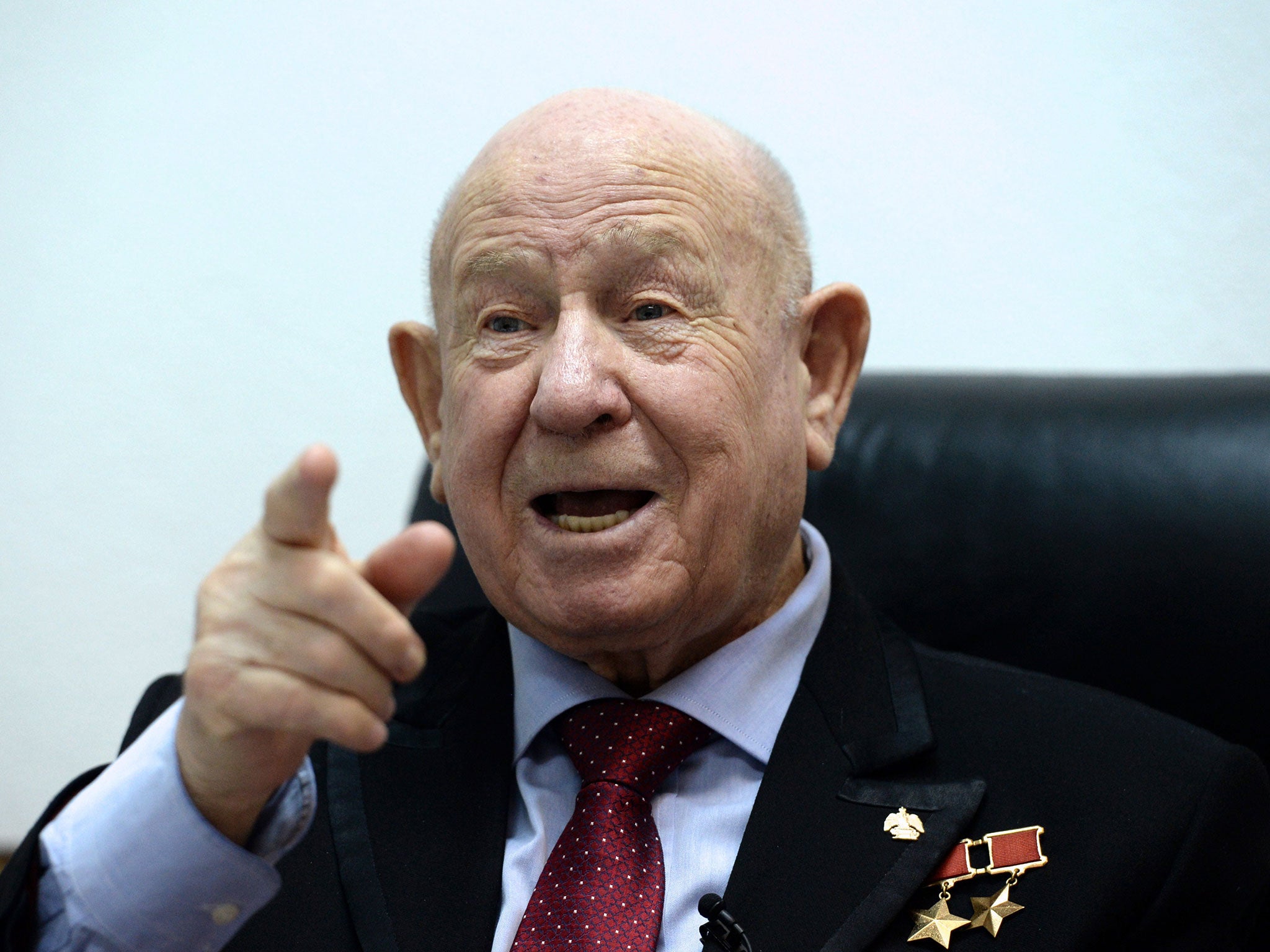Alexei Leonov: First man to walk in space launches new Science Museum exhibition devoted to Russia's space programme
Director Ian Blatchford hopes the new Russian space exhibition ‘will be Science Museum’s Tutankhamun’

Your support helps us to tell the story
From reproductive rights to climate change to Big Tech, The Independent is on the ground when the story is developing. Whether it's investigating the financials of Elon Musk's pro-Trump PAC or producing our latest documentary, 'The A Word', which shines a light on the American women fighting for reproductive rights, we know how important it is to parse out the facts from the messaging.
At such a critical moment in US history, we need reporters on the ground. Your donation allows us to keep sending journalists to speak to both sides of the story.
The Independent is trusted by Americans across the entire political spectrum. And unlike many other quality news outlets, we choose not to lock Americans out of our reporting and analysis with paywalls. We believe quality journalism should be available to everyone, paid for by those who can afford it.
Your support makes all the difference.The first man to walk in space has launched a landmark Science Museum exhibition devoted to Russia’s pioneering space programme - by expressing surprise that his country had agreed to hand over the exhibits.
The show, which took five years to put together, explores the idea that the Russian space programme is “one of the great cultural, scientific and engineering achievements of the 20th Century”, according to the museum’s director Ian Blatchford.
Cosmonauts: Birth of the Space Age features around 150 significant loans from Russia. Most of the items have never before left the country, and few have been seen even by Russians. Many needed special security declassification.
Mr Blatchford said he hoped the exhibition would be “to science history what the great Tutankhamun exhibition at the British Museum was to archaeology.” That 1972 exhibition was the most popular in the British Museum’s history, seen by 1.7 million people.
Exhibits include the 1903 notebook of a pioneering rocket engineer dubbed the “Tolstoy” of the Russian space programme. The public will also be able to inspect the craft which took the first woman cosmonaut in and back out of orbit.
Special guest at the exhibition announcement was former cosmonaut Alexei Leonov, who made history 50 years ago by becoming the first man to conduct a spacewalk, on the Voskhod 2 mission.
Leonov, now 80, said the array of material lent by the Russians was remarkable - at a time when London-Moscow relations remain strained.
“I didn’t know the efforts you went to for the exhibits,” he said. “It’s quite a surprise they lent them to you.”
Among the extraordinary loans is the Voskhod 1 descent module, which weighs 2.6 tonnes, and brought three cosmonauts back from space in 1965. It was the first time more than one person had been sent into orbit. The Vostok 6 spacecraft will also be on display. It carried Valentina Tereshkova, into and back from orbit. The eight foot capsule is charred and burned, scars from its 17,000mph re-entry into the earth’s atmosphere.
The exhibition will show several of Mr Leonov’s items. A talented artist, he sketched the rising sun while he was in orbit in March 1965, which will be on display, as will the pencils he used, specially fitted to a rubber ring to stop them floating off in the weightless conditions.
He spoke of the flight: “There were many problems during my first flight. Many of those were impossible to test on earth, for example how would the space suit react in the vacuum of space? But I had to do it.”
Newer exhibits on display will include the suit worn by Britain’s first cosmonaut, Helen Sharman. She wore it for her flights to the Mir space station as part of the Soviet Juno Mission in 1991.
“Helen Sharman was one of my pupils,” Leonov said. “She is a wonderful astronaut… you should be proud.”
Join our commenting forum
Join thought-provoking conversations, follow other Independent readers and see their replies
Comments